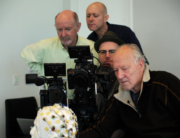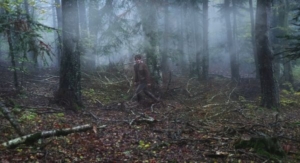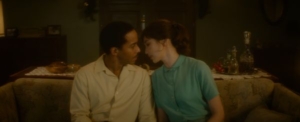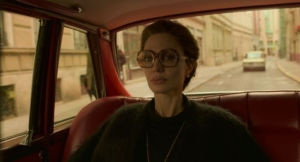
The Lowndes County Freedom Organization’s headquarters, 1966 (Jennifer Lawson/Greenwich Entertainment)
![]() Where do transformational social ideas and movements come from? We may often think it’s from charismatic leaders or from flash-point moments that send off sparks. But the truth may be that everyday people—and where they are from—give birth to the most potent ideas. The new documentary Lowndes County and the Road to Black Power, from directors Geeta Gandbhir and Sam Pollard, does an excellent job of spelling out exactly that, as its title suggests: how the concept of Black Power came from a specific time and place.
Where do transformational social ideas and movements come from? We may often think it’s from charismatic leaders or from flash-point moments that send off sparks. But the truth may be that everyday people—and where they are from—give birth to the most potent ideas. The new documentary Lowndes County and the Road to Black Power, from directors Geeta Gandbhir and Sam Pollard, does an excellent job of spelling out exactly that, as its title suggests: how the concept of Black Power came from a specific time and place.
There’s been no shortage of films about the Civil Rights Movement of the 1960s in recent years, but they are often tied to leaders or focusing on specific incidents (like Till). This film does feature pivotal civil rights leaders—such as Ella Baker and Stokely Carmichael of the Student Nonviolent Coordinating Committee. They were key figures, among others, in creating and developing the ideology of Black Power, but the focus here is how their actions necessarily came out of the experiences of the Black citizens of Lowndes County, Alabama, and how the situation there in the 1960s is as relevant today as it was then.
Lowndes County during the 1960s was a dangerous place for Black people. Lynching was not uncommon—it earned the nickname “Bloody Lowndes” for that reason. It was one of the poorest counties in the state, and it was common for Black residents, who made up 80 percent of the county’s population, to go without running water. One man interviewed said he didn’t take his first shower until high school in the school gym. The message that White liberals preferred—peaceful protest, nonviolent resistance—was so obviously inadequate to the circumstances at hand, in a county where not a single eligible Black person was registered to vote, that actions more direct and pragmatic had to emerge to make political inroads.
There are some noteworthy archival interviews with Carmichael, where he recounts how when he was out driving around Lowndes County, other vehicles tried to drive him off the road. He explains that he didn’t react with fear but with maneuvers while carefully driving to try to outrun them. This is a good metaphor for the approach of the Black activists here—they didn’t react to the racist violence they routinely encountered with fear but rather with strategic thinking about how to defeat it.
This was why they focused on building political power, getting Black citizens registered to vote, as the best way to improve their lives. The progressive Lowndes County Freedom Organization formed to increase Black representation in public office. It supported candidates in local races in positions for the board of education, county coroner, tax assessor, and so on. The Black Power slogan was a way of expressing the need to take control of political structures in a way that went beyond ideals and marches.
The LCFO wanted a logo to catch the eye of the citizens. At first, the artist Dorothy Zellner designed a white dove, as a symbol of peace. This didn’t quite capture the feisty spirit the group was going for, so Carmichael asked her to redesign it. He came to her with a rough sketch of a panther, based on the mascot for Clark Atlanta University, which she then improved and made into the image of a black panther. One interviewee points out that the panther was the perfect symbol for the LCFO’s goals. Cats are peaceful and mellow until they’re backed into a corner, at which point they become fierce. This was precisely the spirit in which the activists organized their political efforts.
A timely and fascinating reminder of the roots of a trailblazing idea, Lowndes County and the Road to Black Power is an essential film.
















Leave A Comment